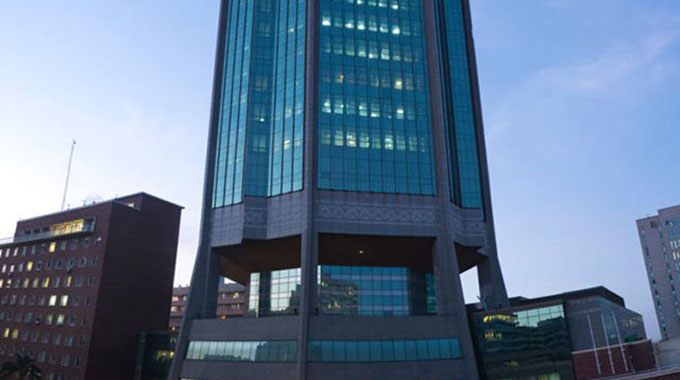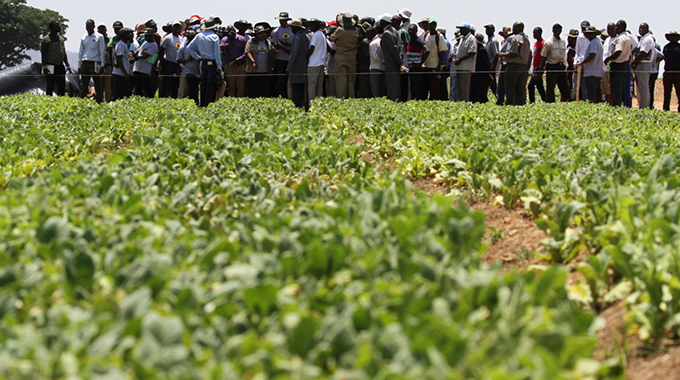Exotic trees doing city more harm than good

Elita Chikwati Senior Reporter
Harare would be a bare and barren city without its roadside trees, parks and flowering trees which have been a landmark for many decades.
But now, older trees are becoming ever more dangerous and need to be replaced, with tree specialists recommending fast-growing flowering indigenous trees.
The jacaranda trees, whose blooming signals the onset of spring and early summer, provide carpets of purple flowers on the roads and streets, are a city landmark and have presented a lot of photo opportunities for residents and visitors.
Such is the fame surrounding jacaranda trees that some people have seen it fit to organise a music festival named after them, the Jacaranda Festival.
While the purple jacaranda is a South American tree, it was spread around the warmer parts of the world in the second half of the 19th century and reached Harare in the later 1890s when a Mr Holland missed a train while on honeymoon in Durban, visited a botanic garden while waiting for the next train a few days later, and brought six saplings back with him.
In the early 1900s, in a depression after the Boer War, the British South Africa Company, which was running the country it had conquered, backed a plan by the Harare parks superintendent — a Mr Montagu — to hire unemployed and hungry settlers at one shilling and sixpence a day to plant the tens of thousands of saplings that had been planted from seed. Some years later, Cape Avenue, where a special effort had been made, was renamed Montagu Avenue, becoming Josiah Chinamano Avenue after Independence.
This means thousands of jacarandas and flamboyants, a species with red leaves indigenous to Madagascar, were planted in the first few years of the 1900s and are now well over a century old, which is an advanced age for a jacaranda. This accentuates their other troubles. Jacaranda trees are also exotic and invasive.
They grow so fast that they quickly take over areas, crowding out native plants. In some cases, these trees were planted too close to structures such as buildings, roads and other infrastructure and with their strong surface roots, damage pavements, roads and foundations. But these damaging roots are also shallow and can easily give in to external pressures and come down crushing on anything in its path as has been the case during the past rainy seasons. Of late, the incidences of jacarandas and flamboyant trees falling and killing people, damaging cars and houses have increased, and mostly witnessed during the rains.
The latest incident saw two people being killed in Mbare, when a commuter omnibus they were in was crushed by the tree.
This has resulted in growing calls by residents for authorities to cut them down and plant indigenous varieties which they think are much stronger and have more benefits than the exotic ones. There are a wide variety of Zimbabwean trees that have attractive flowers, grow fast and have deep tap roots rather than spreading surface roots.
Harare City Council is aware of the dangers being posed by the old trees and has since started replacing them.
Council’s principal communications officer Mr Innocent Ruwende said they are in the process of cutting down all old trees and pruning others.
“The major challenge is the adverse weather conditions associated with heavy rains and strong winds. These heavy rains accompanied by strong winds have loosened the ground and the trees are falling,” he said.
He, however, said falling trees were not only a danger to the public during the rainy season, but also clogged drains.
“We have a lot of work on our drainage systems and we urge residents to complement our efforts through proper waste disposal. We advise our motoring public not to park their vehicles under tress during the adverse weather conditions. The municipality wants to keep the tree-lined streets, but recognises that new trees have to be planted because trees act as carbon sink and it is in line with the efforts to green the city.
“We have already done the Leopold Takawira stretch up to Parirenyatwa Hospital, Julius Nyerere and Samora Machel working with our partners,” he said.
The Forestry Commission has also chipped in with other tree species that can be used for ornamental purpose just as the jacaranda and flamboyant.
Forestry Commission information and communications manager Ms Violet Makoto said while municipalities have the responsibility of cutting down old trees, their role is to provide technical advice on replacement species that are more solid and can withstand harsh weather conditions.
“We do have indigenous species that can replace jacarandas. We have been planting a species called: bolusanthus speciosus (botanical name). This is also known as the impaca in Ndebele, mukweshangoma in Shona and wisteria in English,” she said.
The wisteria is more beautiful and more flamboyant than the jacaranda, but with the extra benefit that it is indigenous.
Wisteria is a vining plant with cascades of blue to purple flowers that look spectacular hanging from an archway in spring and early summer.
This vine is a fast and aggressive grower—often reaching 25 to 30 feet long—and is known to grow quite heavy.










Comments